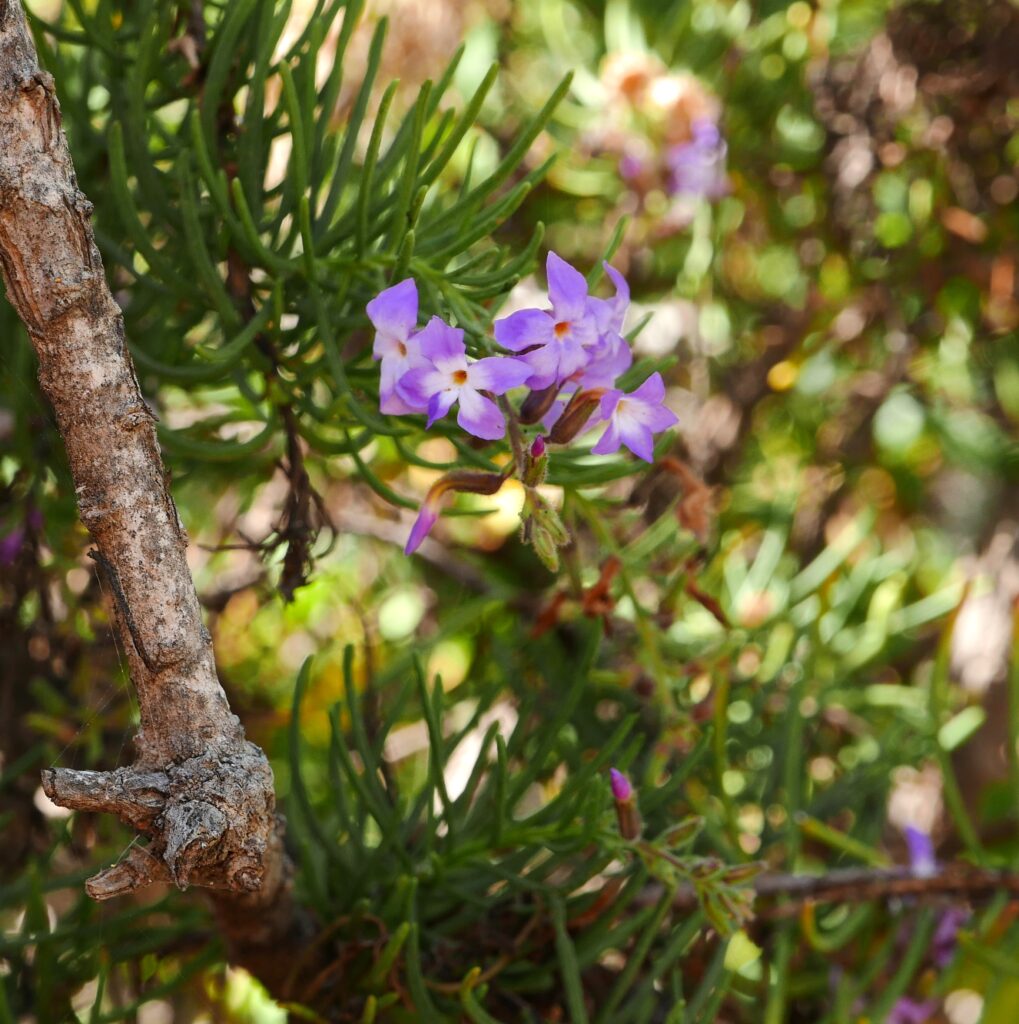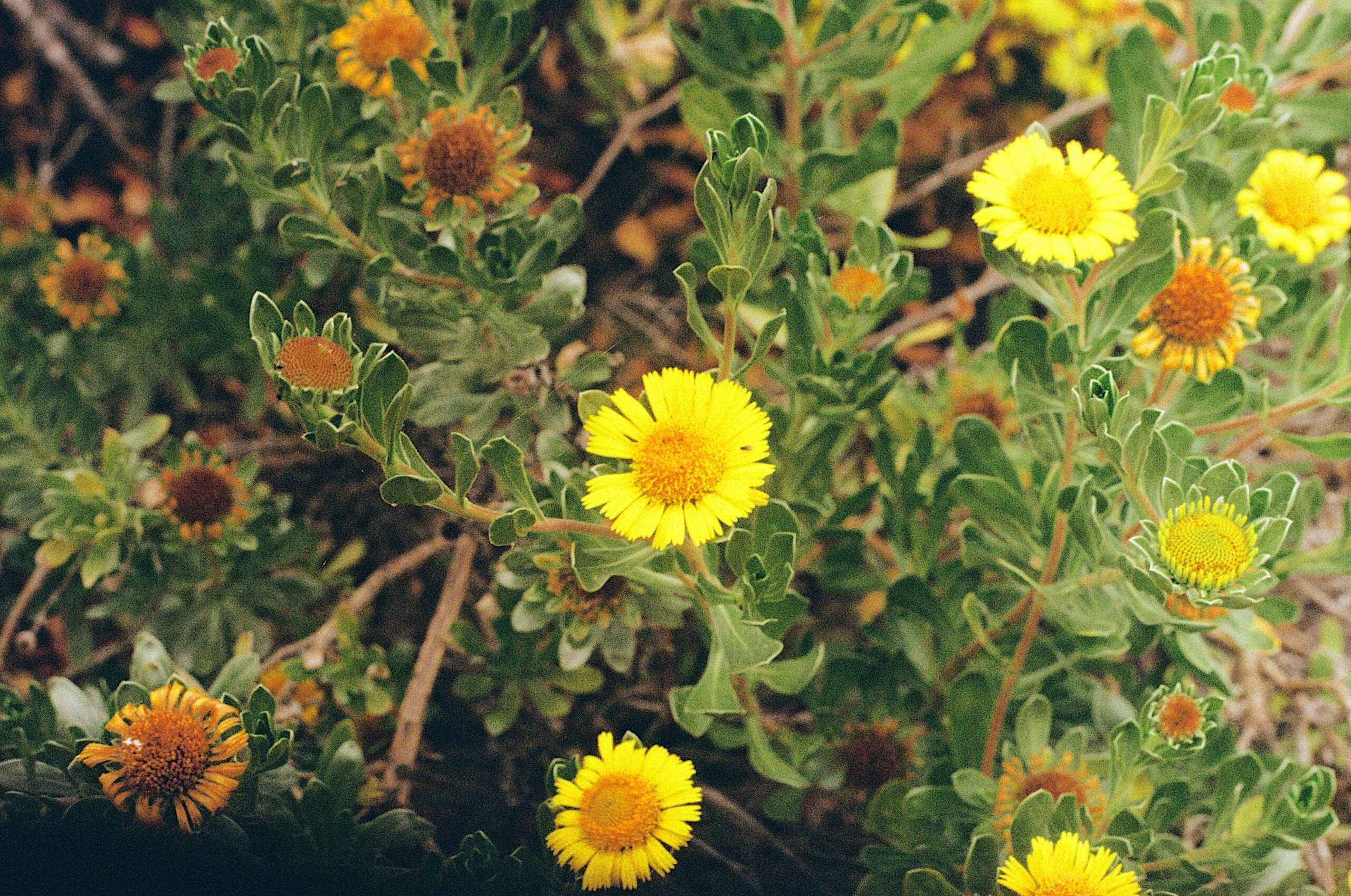¿Endémica? ¿Nativa? ¿Exótica?
Las especies endémicas se encuentran solo en una región geográfica específica y no se encuentran en ningún otro lugar, limitándose su área de distribución nativa a ese lugar. Las especies nativas se encuentran de forma natural en una región, sin intervención humana, y se consideran autóctonas de su área de origen, pero pueden encontrarse en otros lugares del mundo. Ambas están bien adaptadas a las condiciones únicas de su hábitat. Las especies exóticas han sido introducidas en una región, generalmente por el ser humano, y a menudo se adaptan de maneras que no siempre son favorables para las especies endémicas o nativas. En ocasiones, una especie exótica puede "naturalizarse", lo que significa que se ha establecido en este nuevo entorno y puede reproducirse y mantener su población sin intervención humana.
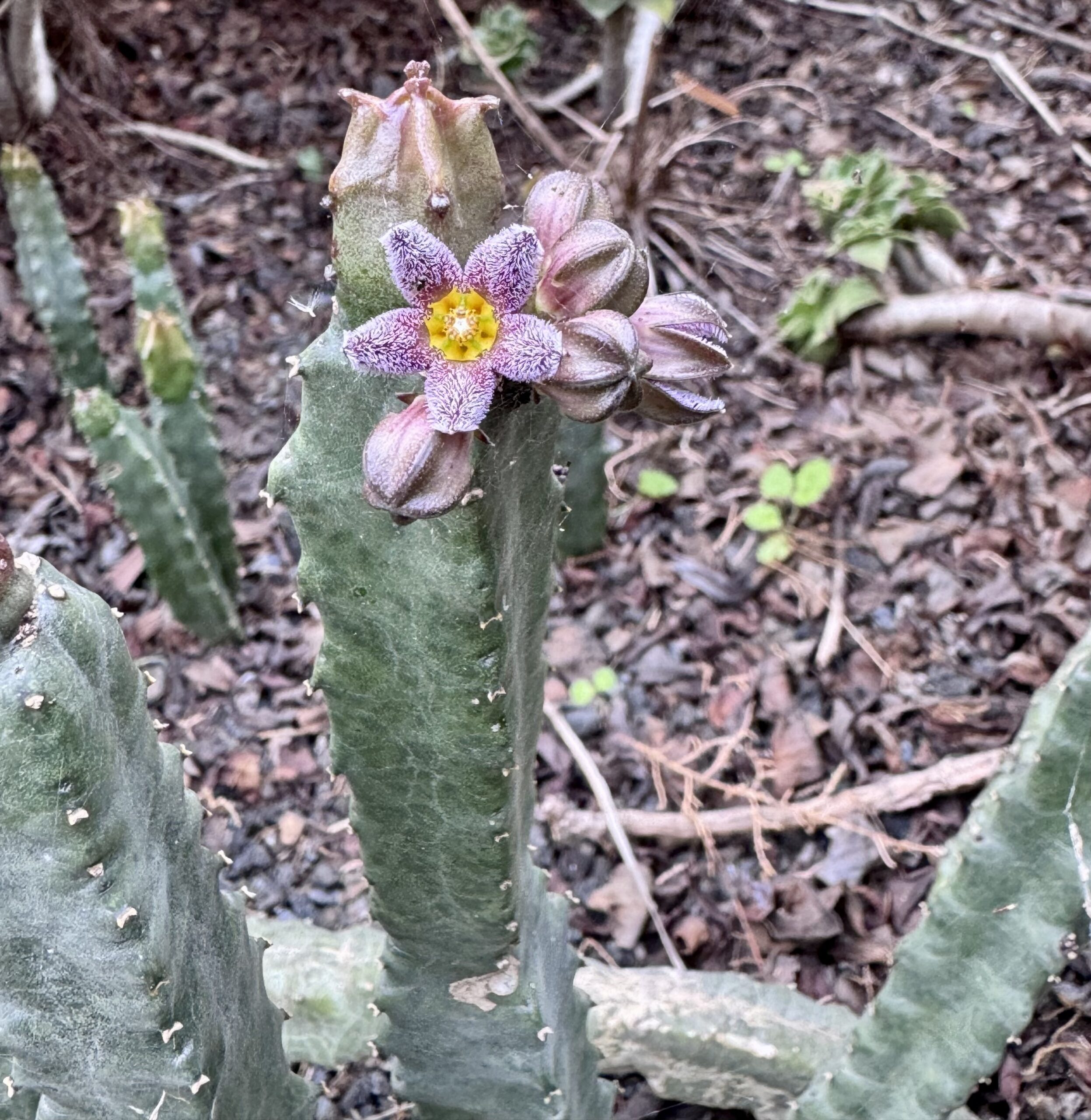
La gente asocia Lanzarote con los cactus, ya que prosperan aquí en abundancia debido a la alta aridez del clima, pero los cactus solo provienen de América. Las especies suculentas con forma de cactus de Canarias y África, aunque a menudo son similares externamente, son genéticamente muy diferentes. Una distinción que se puede hacer rápidamente es que un cactus auténtico produce savia clara, mientras que una planta como la Caralluma burchardii, endémica de Lanzarote y Fuerteventura. Euphorbia Canariensis, o 'Cardon' tiene una savia lechosa. En algunas especies de euforbia, esta savia lechosa es muy tóxica, pero tenía usos como la producción de látex. Por ejemplo, la savia de Tabaiba dulce se utilizó para hacer chicle durante el siglo pasado.
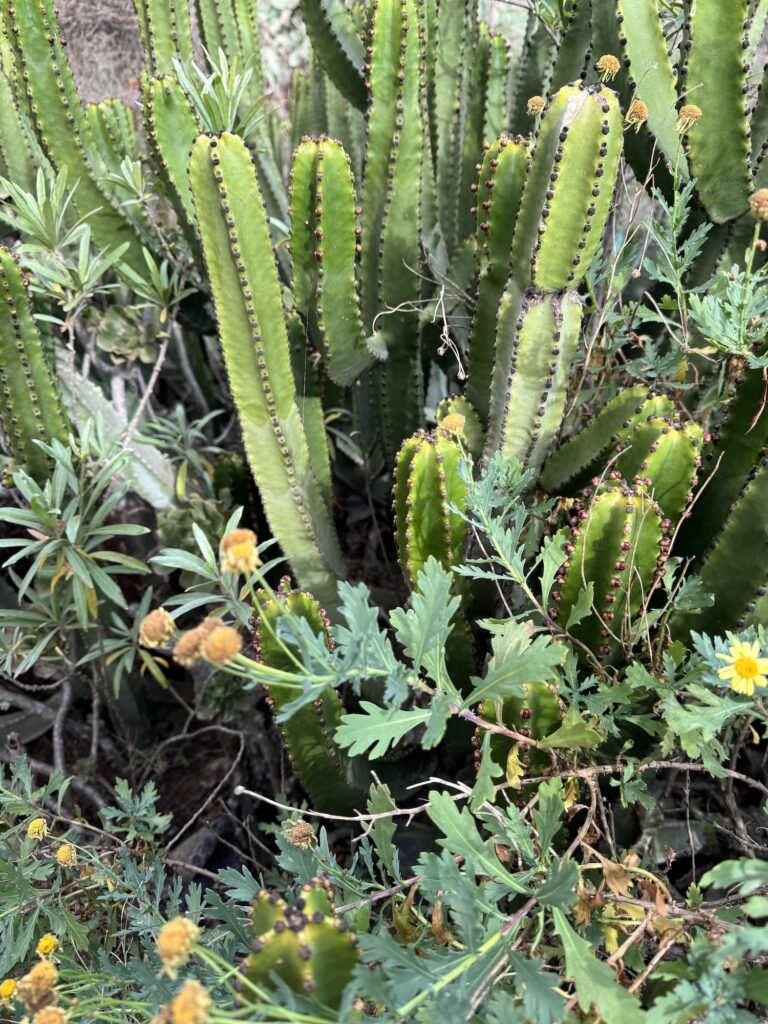
Haría ha estado habitada durante miles de años. Antes de que los españoles colonizaran Lanzarote en el siglo XIV, los indígenas (conocidos como los majos) sobrevivían años de escasez o ausencia de lluvia gracias a su sistema agroforestal "palmeral", el encantador palmero canario tiene raíces lo suficientemente profundas como para crecer incluso en los años más secos, alimentando con sus frondas a sus cabras que producen leche y carne. Las 4 palmeras maduras en el otro extremo del jardín son parte de un antiguo palmeral. Más recientemente, la gente aquí desarrolló el sistema "picón": las cenizas volcánicas negras que se ven cubriendo la mayoría de los campos aquí se agregan para eliminar la evaporación, almacenando el agua de lluvia en el suelo arcilloso subyacente durante muchos meses (ver harialanzarote.com/stone-mulching ). Siento una enorme admiración por la forma en que la gente de aquí ha enfrentado la adversidad, no estoy seguro de si mi apreciación es recíproca, a la mayoría de mis vecinos no les gustan los árboles: ¡toman agua que podría usarse para cultivar patatas! Durante siglos, la vida aquí ha sido una lucha, la aridez y el viento se combinan para hacer que el cultivo sea muy difícil, debido a esto hay poco interés local en cultivar algo que no se pueda comer.
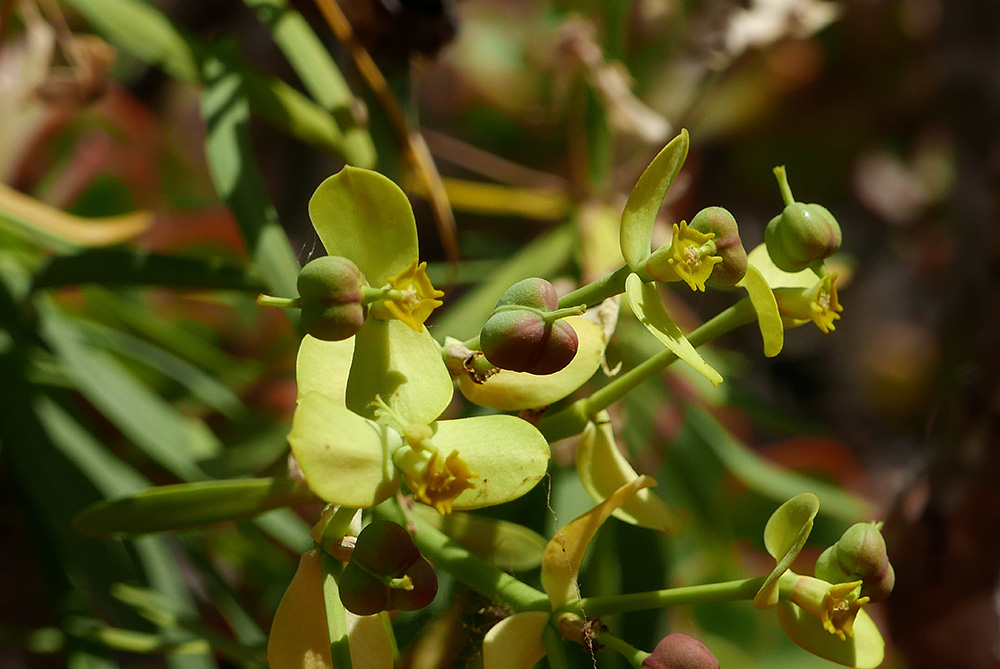
A lo largo de los años he observado cómo nuestras plantas con flores parecen turnarse para producir flores, probablemente para garantizar que siempre haya algo que mantenga vivos a los polinizadores.
Especies de Aeonium
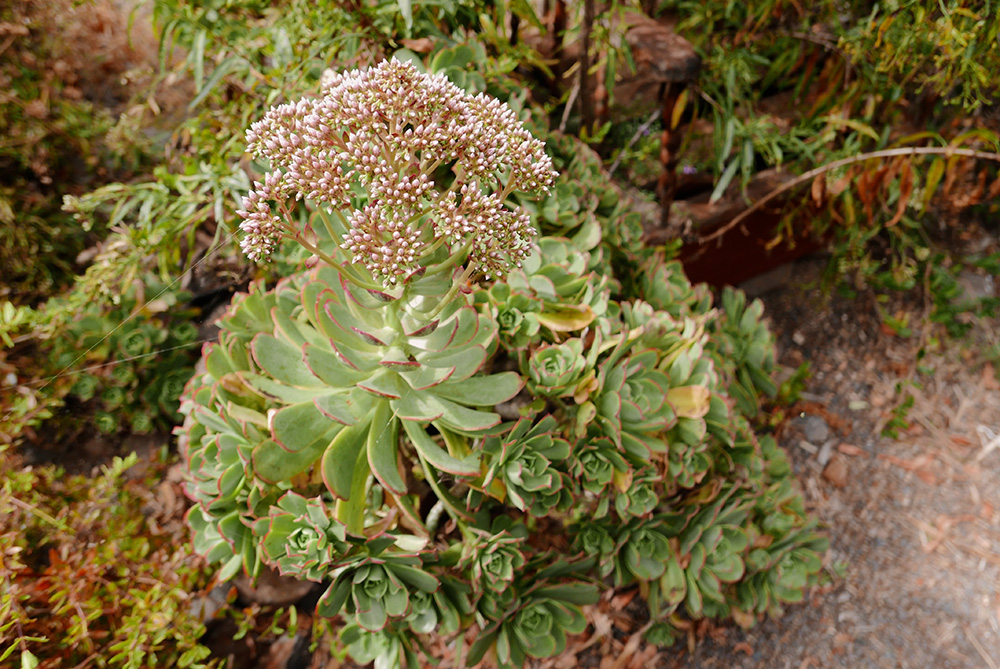
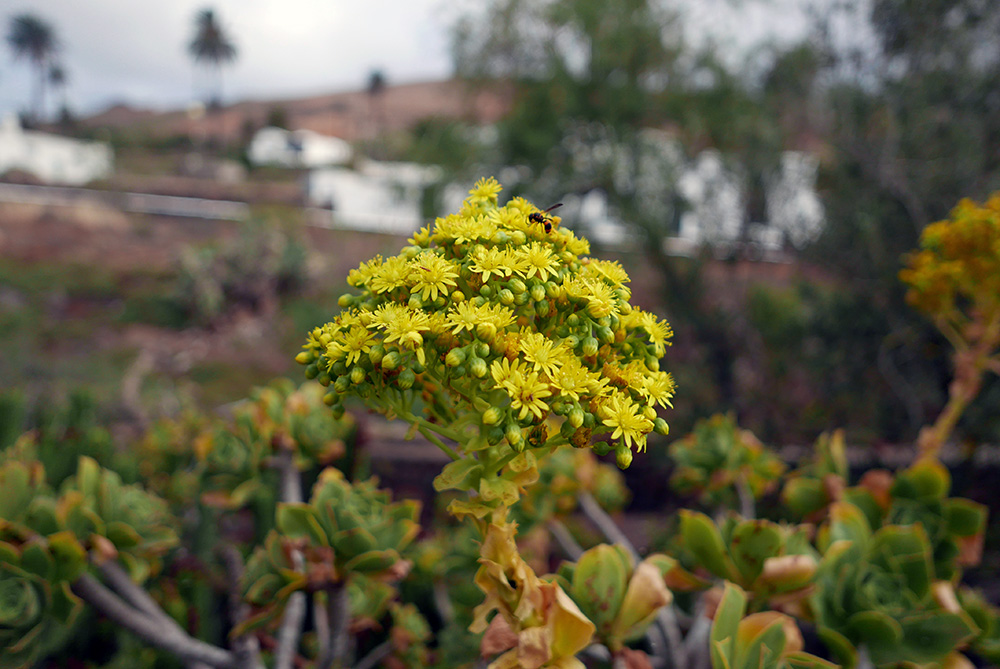
Limonium
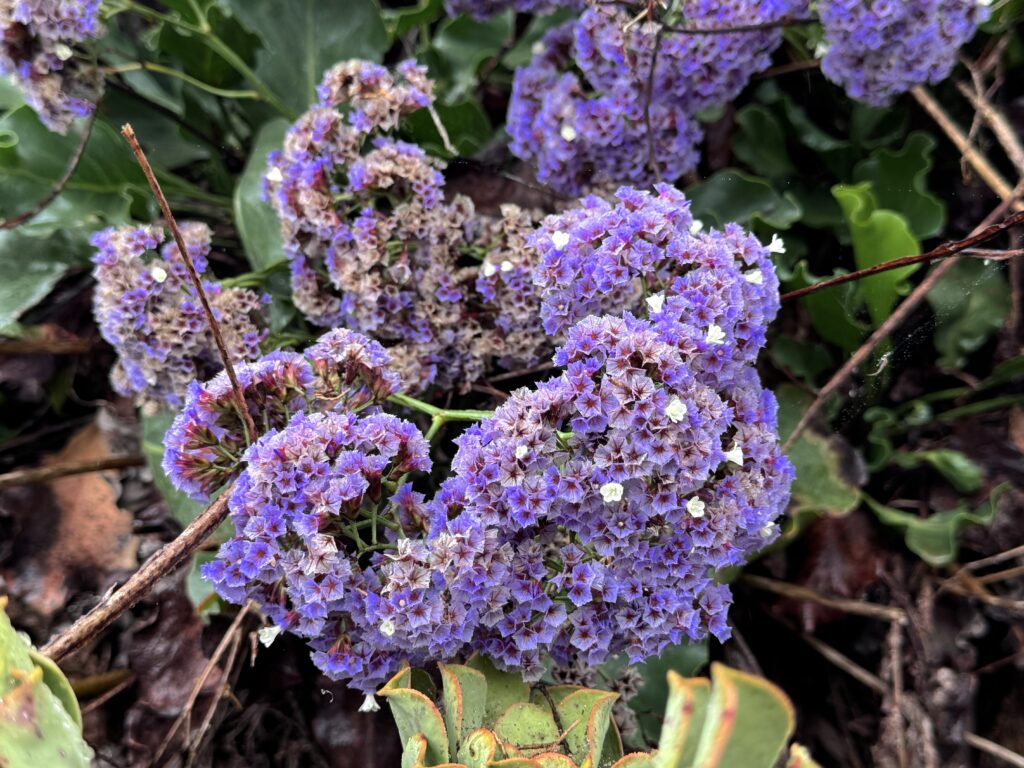
Sonchus
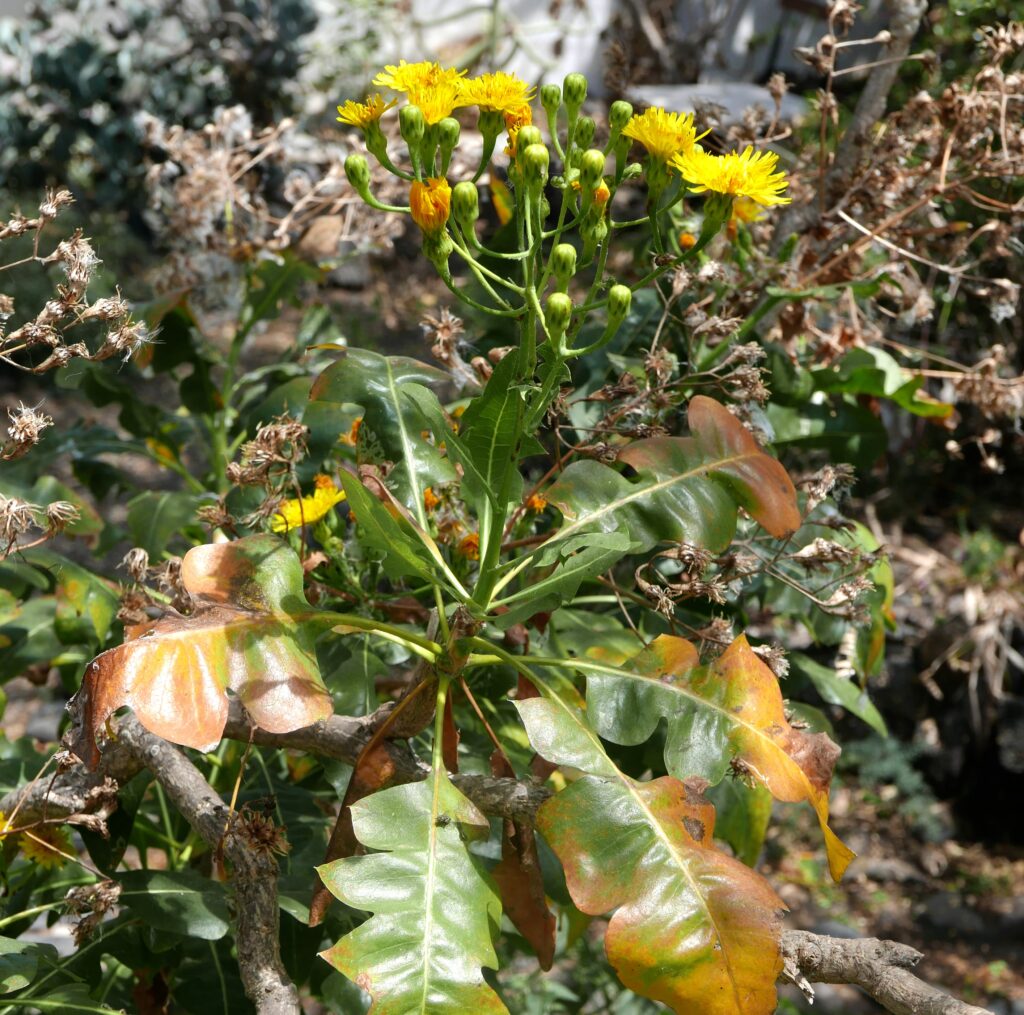
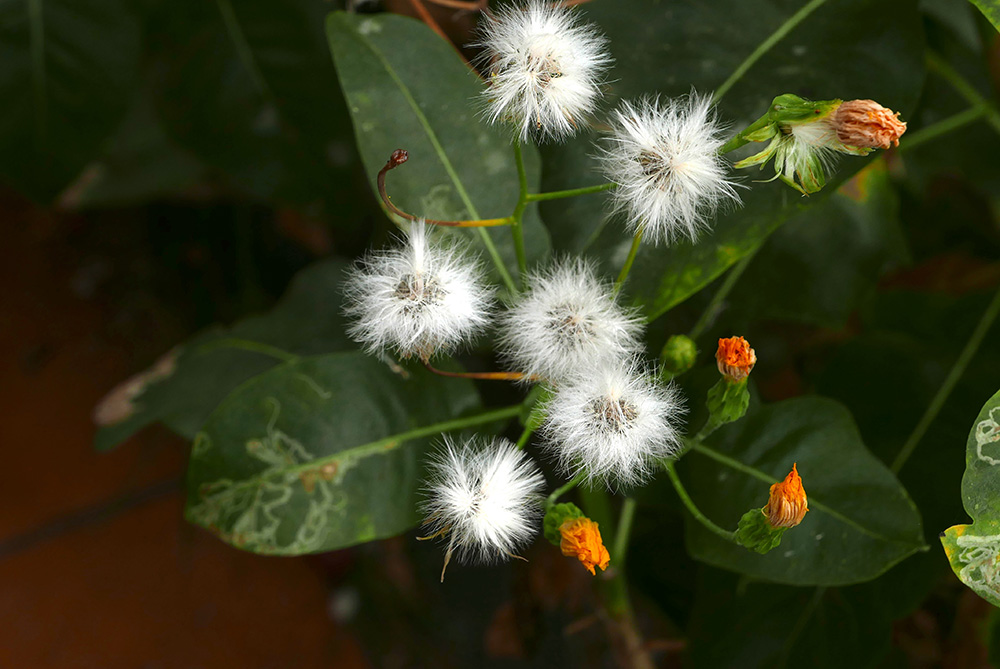
Asparagus
Las condiciones aquí podrían favorecer la coevolución de plantas que florecen en diferentes épocas, de modo que los insectos polinizadores reciben un suministro constante de alimento. Ciertamente, parece que siempre hay algo floreciendo en el jardín; cuando las flores de Aeonium empiezan a marchitarse, aparecen estas atractivas flores blancas. Dos especies autóctonas de la familia de los espárragos se encuentran en el jardín. Asparagus nesiotes (abajo) está muy bien establecido. Asparagus arborescens, aunque de apariencia menos delicada, no parece crecer tan vigorosamente.
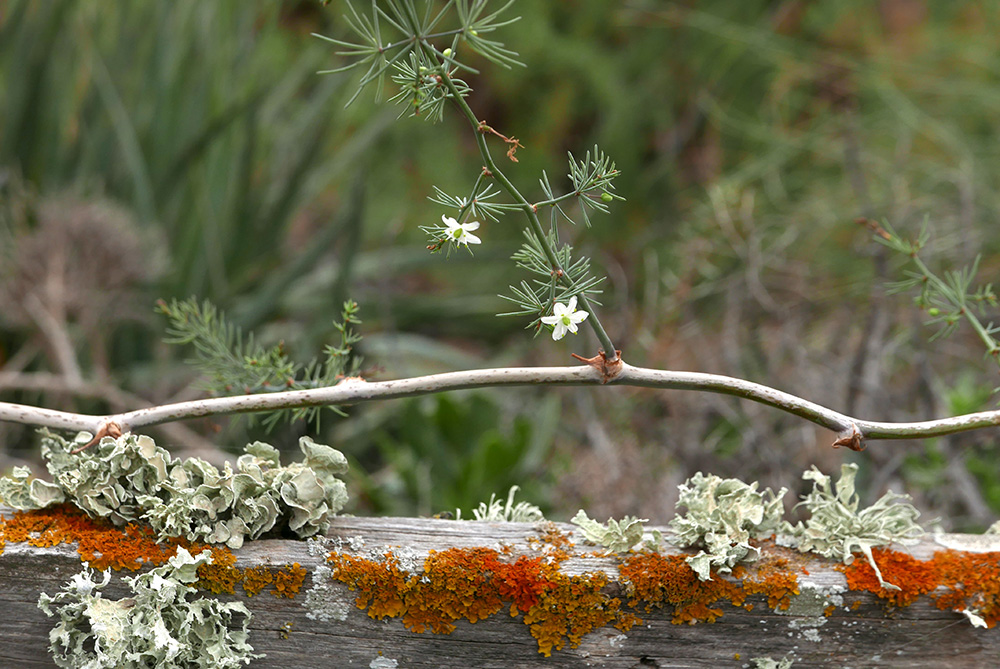
Asteriscus
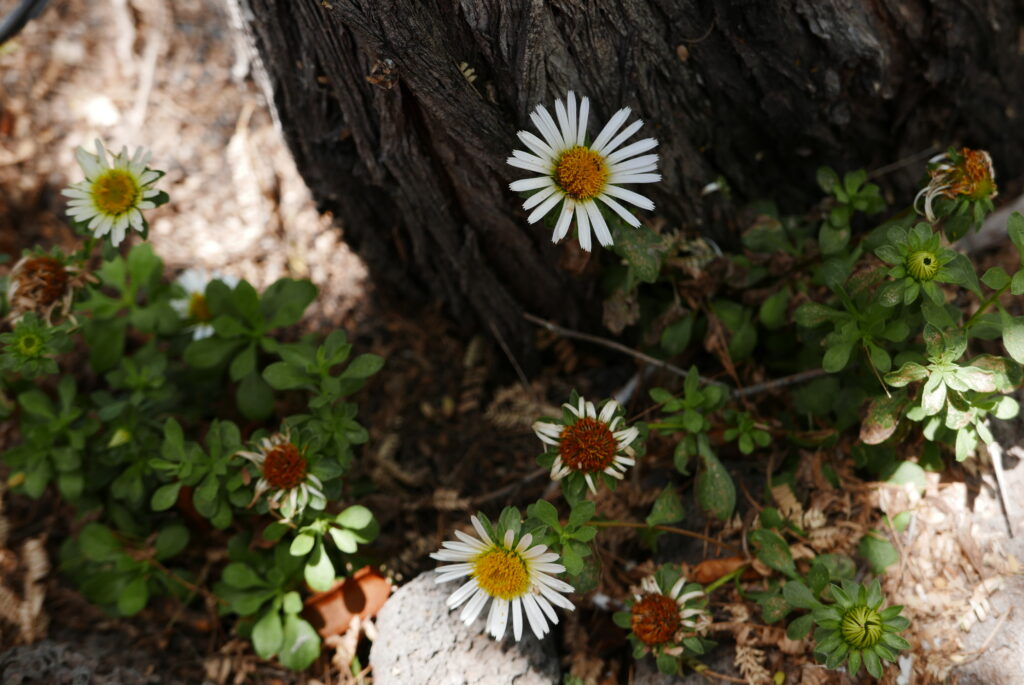
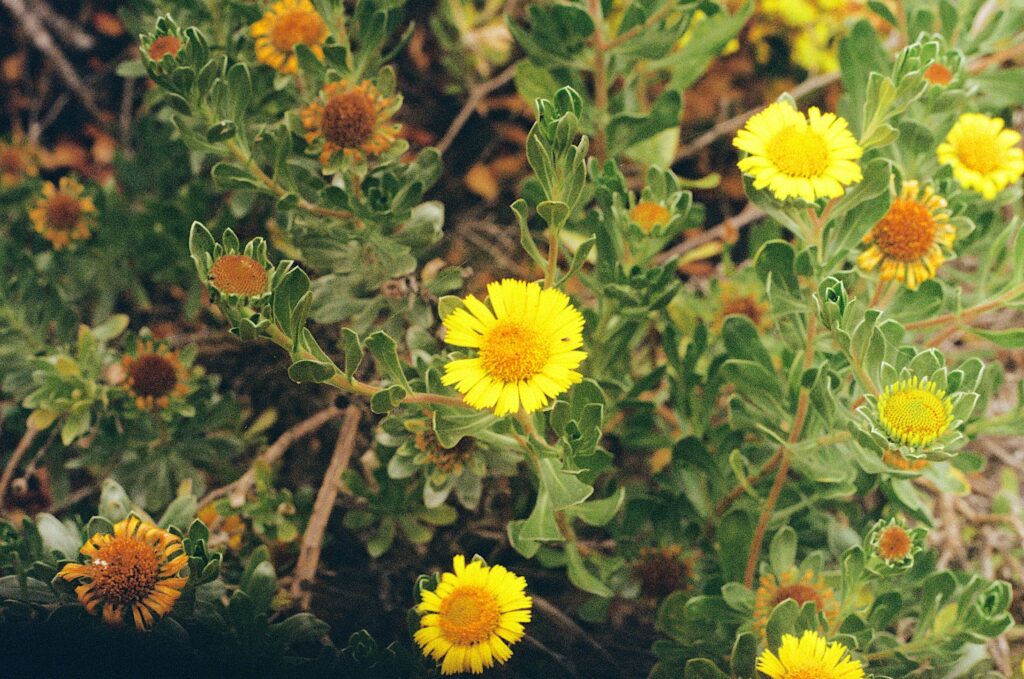
Convolvulus
La correhuela, enemiga del jardinero, ha evolucionado hasta convertirse en una especie canaria única. Recientemente se descubrió en el Risco de Famara, en Haría, la rara trepadora de flores moradas Convolvulus lopezsocasi (protegida en la Lista Roja) en la imagen inferior. Florece en varias partes del jardín. Aunque es mucho menos rara (endémica de las Islas Canarias), Convolvulus floridus tiene un impacto igualmente impactante en el jardín. Esta especie forma un arbusto que alcanza hasta 3 metros de altura.
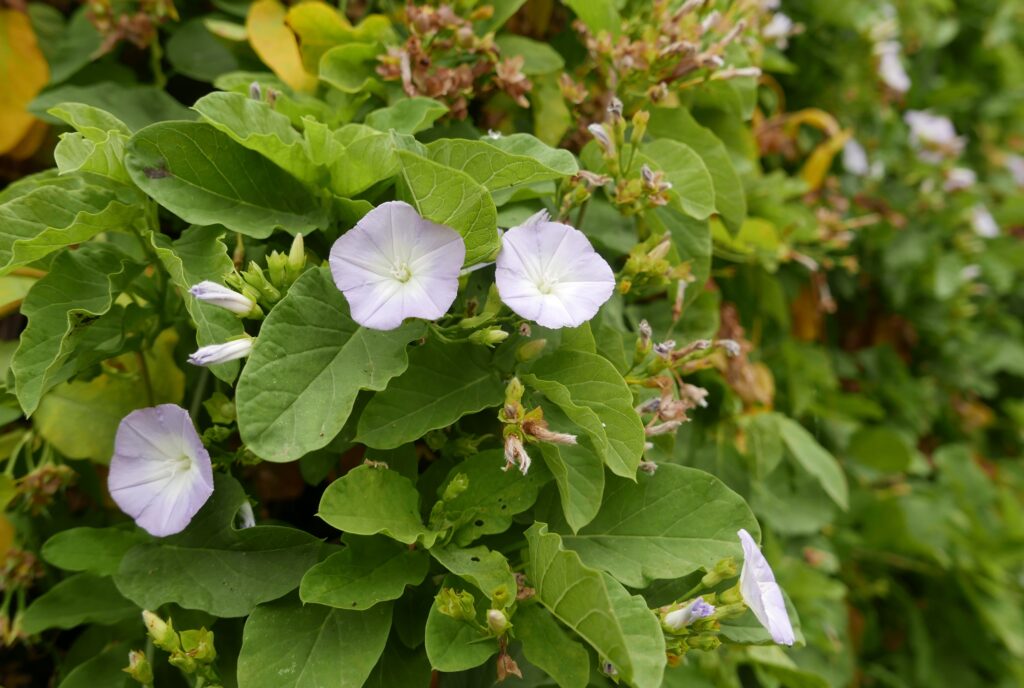
Echium
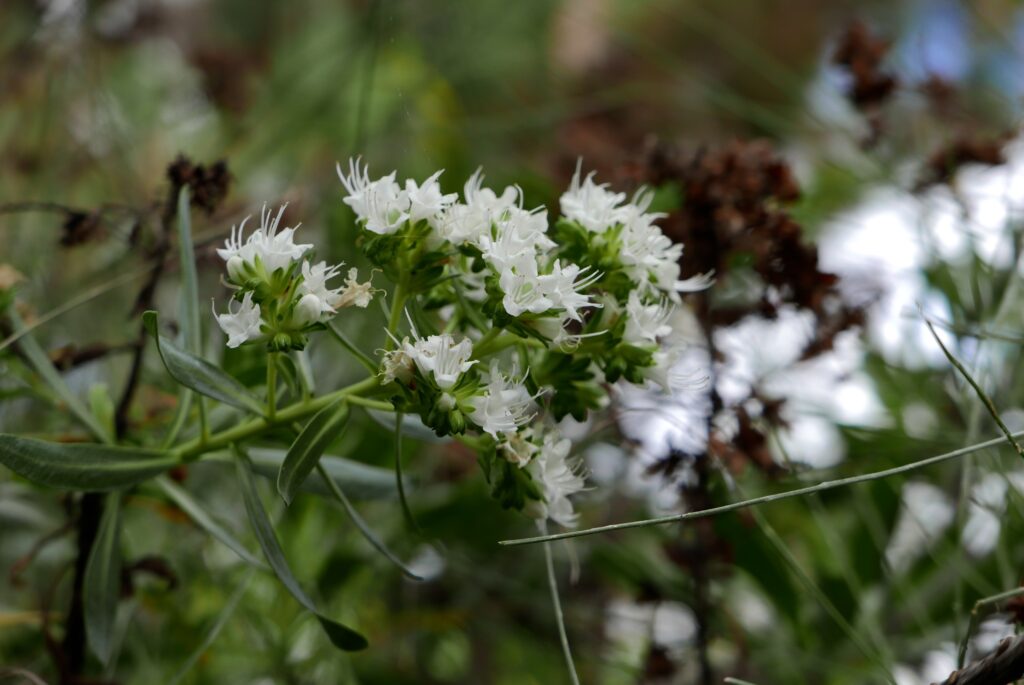
Lavandula
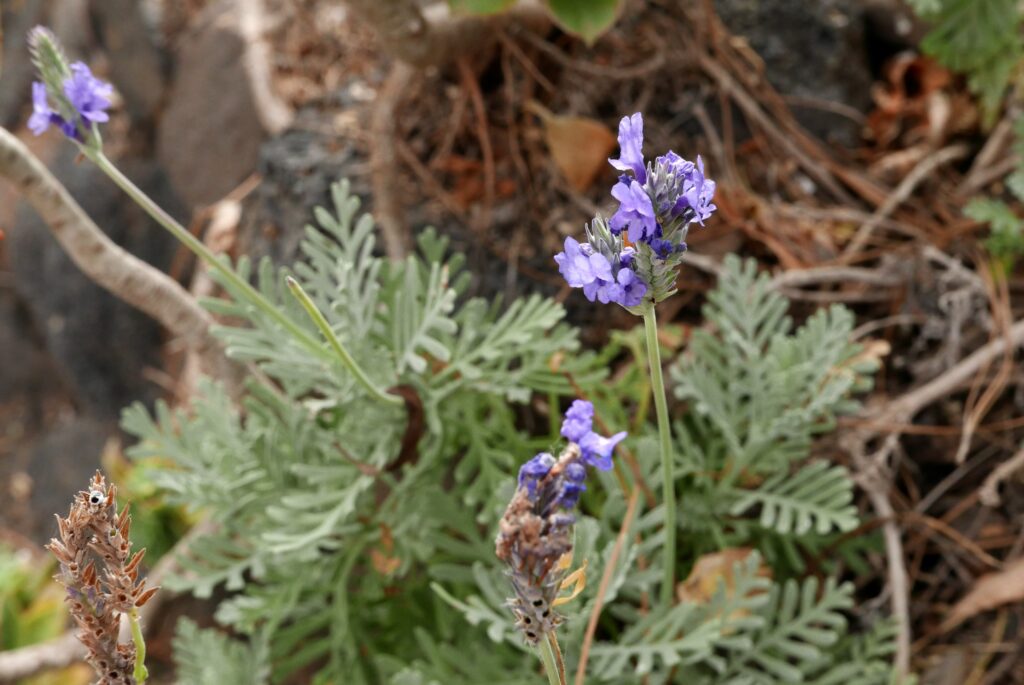
Caralluma burchardii

Campylanthus salsoloides Roth
